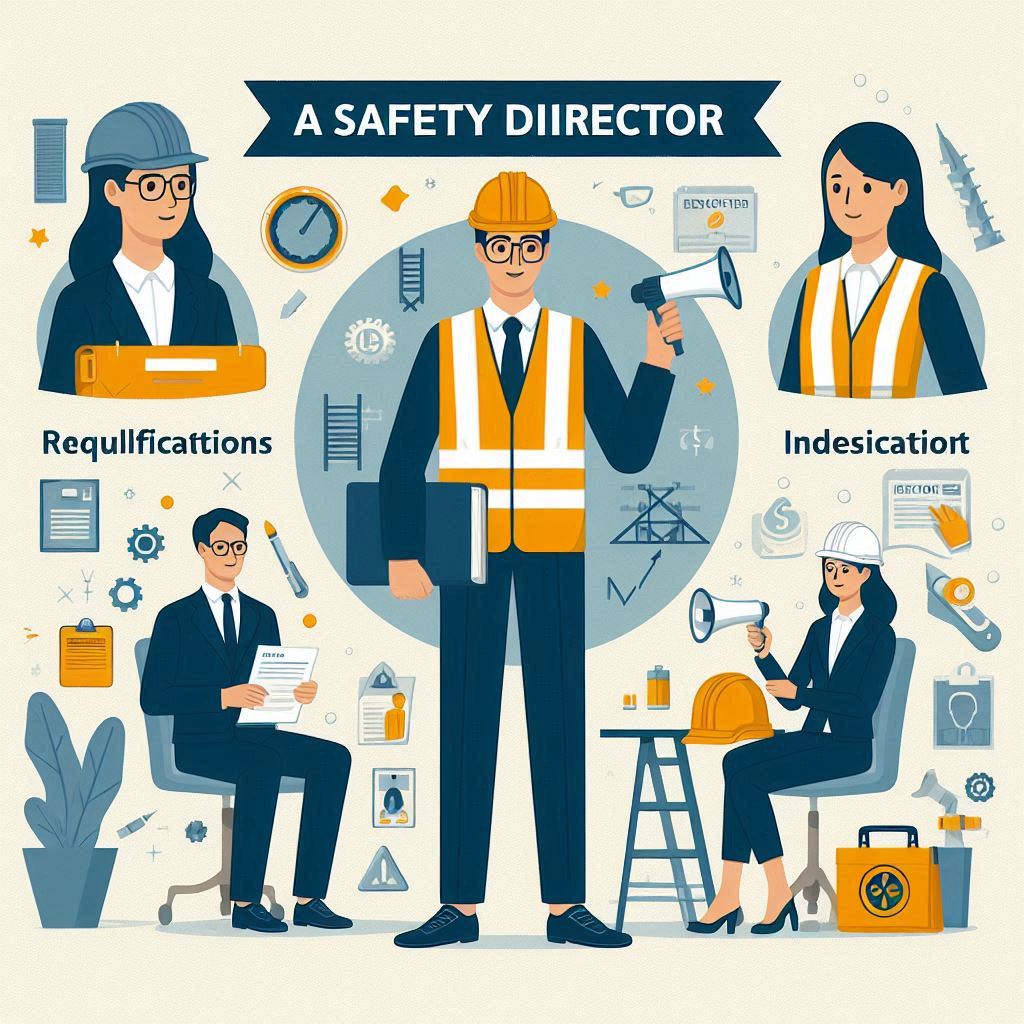
The Role of a Safety Director: Responsibilities, Qualifications, Investment, and Salary
Milan SafetyShare
Introduction
In today's fast-paced industrial and commercial world, the role of a Safety Director is crucial to ensure a safe and compliant workplace. As industries expand and become more complex, safety management must evolve to prevent workplace accidents, injuries, and hazards. The Safety Director is a senior leader responsible for the overall safety strategy and the implementation of policies to protect employees and comply with local, state, and national safety regulations.
Key Responsibilities of a Safety Director
-
Developing and Implementing Safety Policies
Safety Directors are responsible for creating comprehensive safety protocols that align with regulations such as OSHA (Occupational Safety and Health Administration) or local safety regulations. They continuously update policies as per the latest standards. -
Risk Assessment and Mitigation
Identifying potential workplace hazards is a major part of the job. Safety Directors assess various risks, whether related to equipment, processes, or the environment, and take steps to mitigate those risks. -
Training and Development
A significant aspect of the Safety Director's role involves training employees on safety procedures, emergency responses, first aid, and the use of personal protective equipment (PPE). They conduct regular safety drills, like fire and evacuation exercises. -
Compliance Management
They ensure that all company operations adhere to safety regulations and standards. Regular audits, inspections, and record-keeping are performed to maintain compliance and minimize the chances of penalties or lawsuits. -
Incident Investigation
In the event of an accident, the Safety Director investigates the cause and creates a detailed report. This helps in understanding the root cause and implementing corrective actions to prevent future incidents. -
Collaboration with Other Departments
Safety Directors work closely with HR, operations, and senior management to integrate safety into every aspect of the business. They provide updates and recommendations to improve safety culture and practices.
Educational Requirements and Study Path
To become a Safety Director, a combination of education and experience in safety management is essential. The typical path includes:
- Bachelor's Degree: A degree in Occupational Safety, Industrial Hygiene, Environmental Health, or a related field is a common starting point.
- Certifications: Obtaining certifications like NEBOSH, IOSH, or Certified Safety Professional (CSP) greatly enhances career prospects. Specialized courses in fire safety, first aid, and risk management are also beneficial.
- Experience: Most Safety Directors have several years of experience in safety roles such as Safety Officers or Managers, gaining practical expertise in different safety protocols and industries.
Investment in Education and Certification
Investing in education and certifications is crucial for career growth in this field. The typical costs involved include:
- Degree Programs: A bachelor's degree can cost anywhere between $20,000 and $60,000, depending on the institution and country.
- Certifications: NEBOSH International Diploma courses cost approximately $4,000–$6,000, while CSP certification could range from $350 to $450. Continuous professional development courses add to the investment.
- Specialized Training: Fire safety, first aid, and risk management training might range from $500 to $2,000 depending on the course and institution.
This investment can result in long-term career stability and the potential to advance to senior roles within organizations.
Salary Expectations
The salary of a Safety Director varies significantly based on industry, location, and company size. In general:
- Entry-Level: At the beginning of their career, a Safety Director can expect to earn between $70,000 and $90,000 annually.
- Mid-Level: With 5-10 years of experience, salaries range from $90,000 to $120,000.
- Senior-Level: For those with extensive experience and working in high-risk industries (such as oil and gas, construction), annual salaries can reach between $130,000 and $180,000 or more.
Additionally, some Safety Directors receive bonuses, stock options, and other financial perks, particularly in large corporations.
Conclusion
The role of a Safety Director is essential in today's workplace, ensuring that companies not only comply with safety regulations but also foster a culture of health and safety. While the path to becoming a Safety Director requires a substantial investment in education and certification, the role offers both financial rewards and the satisfaction of making workplaces safer for employees.